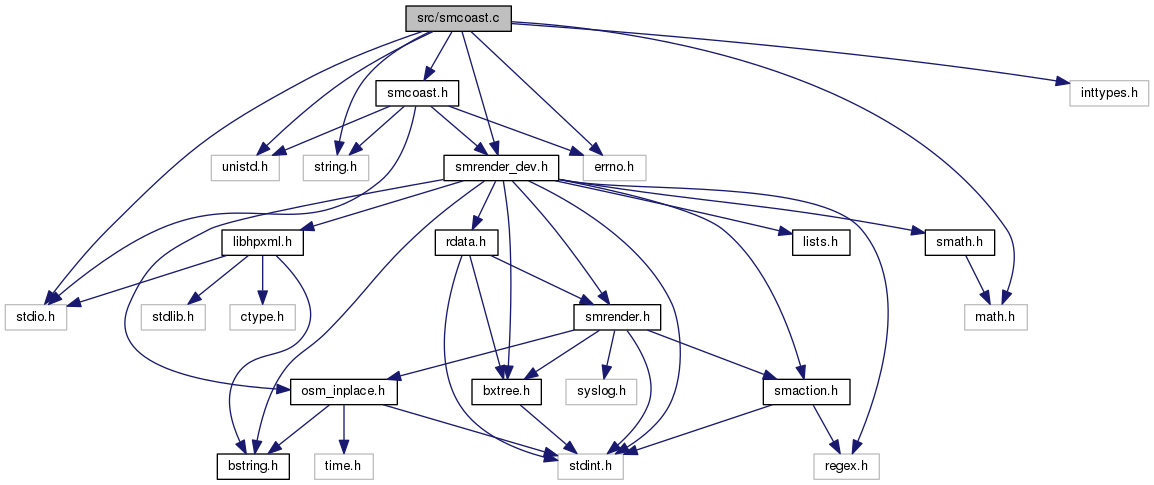This file contains the code which is used to close open polygons. Open polygons obviously cannot be filled, thus the must be closed before. Open polygons occure at the edges of the bounding box which is used to select data out of the OSM database. This is one of the most difficult parts at all.
The basic stages of this polygon-closing algorithm are as follows: 1) Gather all open polygons. 2) Create pdef list which contains all end points of open polygons (pdef_cnt = open_poly_cnt * 2). 3) Retrieve node ids from those points (each start and end point). 4) Sort pdef list by node id. 5) Set prev/next pointers for each point in pdef list at their neighboring points, i.e. if one start point has the same node id as the neighbor end point (poly_find_adj2()). Then it is the same point (node) which belongs to two differrent ways, thus those ways have to be connected. 6) Loop over all ways in the list (loop_detect() returns number of open ways). 6.1) Count nodes of "connected" (next/prev-pointered) ways and detect if there is a loop, i.e. a circular list of ways (count_poly_ref() = 1 if loop, 0 if unclosed). 6.2) Create new way with the according number of nodes (node count = sum of all connected ways). 6.3) Copy node ids of all connected ways to newly created way (join_open_poly()). Mark ways which have been processed as deleteable (from list). Mark those which are still open (i.e. not already looped) as open. 6.4) Put new way to way pool. 7) Free pdef list. 8) Trim open ways to edges of page. 9) Create new pdef list with number of still open ways. 10) Add all end points to pdef list and calculate their bearing from the center point of the rendering area (poly_get_brg() returns number of open ways). 11) Sort points by bearing. 12) Iterate over all points in the order of the list (connect_open()): find first start node and next end node. 12.1) Test if both are on the same edge of the rendering area, otherwise append additional corner point(s) of the rendering rectangle which are between the start and end node in clockwise order behind the end node. 12.2) If start and end node belong to the same way, close polygon, i.e. append start node at the end. 12.3)
- Author
- Bernhard R. Fischer

 1.8.8
1.8.8